
Art | Resources
Wisconsin Goes Fragrance-Free
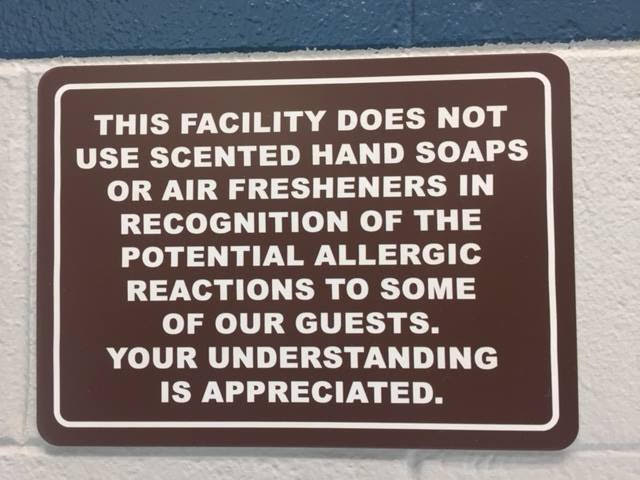
The above sign was spotted in a roadside rest area in restroom, maintained by the state of Wisconsin.
Other public places could do the same.
This may be a response to a 2016 ruling a woman’s chemical sensitivity was a disability under the American’s with Disabilities Act (ADA) because it interfered with the major life activity of breathing.
The link in the above paragraph outlines accommodations employers may need to make in the workplace for those with fragrance allergies, which go so far as to ask or require other employees to abstain from wearing or using scented products.
I remember when smoking cigarettes was first banned in public places and now it is widespread. So I am optimistic the same will happen with fragrance.
Toxic Free Paper Notebooks
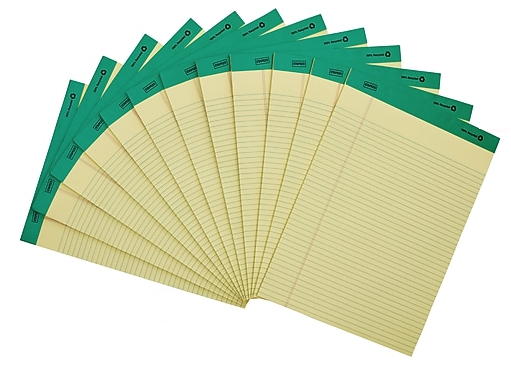
These are the recycled paper notepads I use from Staples. (I don’t like spiral-bound notebooks).
This week I received TWO emails asking about paper office products after not receiving one questions about them in almost forty years of doing this work.
I’ve never addressed this because I’ve never noticed a need to. I buy various recycled paper pads at Staples and I’ve never noticed an odor.
Bonnie wrote this to me:
I have been sorting my old papers which I keep in paper 2 pocket folders. 2 types have solid colors, one with a smooth surface, the other less smooth. I have manila folders which I assume are safe. I have a bank of America folder which is glossy. Also have spiral college ruled paper notebooks. The front are solid colored and the back looks like cardboard.
The back has an odor. I was thinking to buy paper only next time. Are any of these toxic? Thank you.
This is from Mary:
I had been using Mead’s 5X7 150 page notebook to keep track of what I eat, how I feel, etc., but they smelled strongly of disinfectant and I had to air each one out page by page over many days.
I found these notebooks at OfficeSupply. They have no odor. I thought maybe your readers might like to know about them. I don’t knotice an odor with things like steno pads but I needed this style. They are only 120 pages though.
Anyone else having trouble with paper notebooks?
And anyone else have favorite sources for notebooks with no odors?
Natural Treatments for Dry Skin
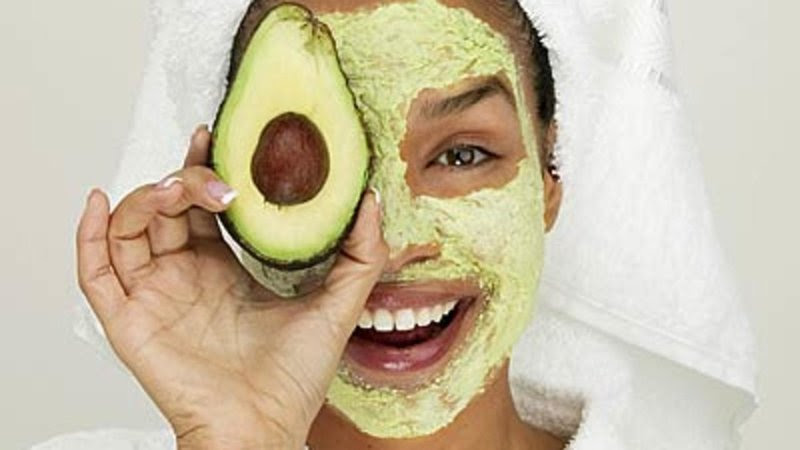
A few weeks ago I sent out a survey and at the end I gave respondents the opportunity to be sent the survey results.
A few days ago I sent the survey results to anyone who wanted them, and soon received this reply:
Still reading the wonderful compilation (and have to do other things today – will get back to it tonight) –
But I was saddened by the woman with severe MCS who is completely isolated. The comment that was really sad was she said her skin is shriveling up because she can’t use any lotions.
I hope you can write to her, or write a piece at some point, not only about the wonderful unscented products out there (I use Griffin Remedy in Bulgarian Lavender, but I know they make a completely unscented – not masked – product), but she could be using organic coconut oil, or extra virgin olive oil, or just some fresh avocado on her skin. Lots of choices besides purchased products!
And most of the good texture in our skin comes from what we eat, not what we put on it. She could be getting more essential fatty acids in her diet I would guess.
So grateful for the work you do so people don’t have to suffer so much!
Love, D
I don’t have dry skin, so I don’t have personal experience with this. But something did come to mind.
Years ago I used a product that was made with a base of honey and it was my favorite skin care product ever. It had some other natural things mixed with it, but I could feel the healing properties of the honey. If I cut my finger, I put honey on it to help it heal. So I would suggest honey, or honey thinned with water.
Ah! I just looked this up and found:
Honey is a natural humectant, meaning it draws moisture from the air into the skin and ensures it’s retained it in the layers where it’s needed most for penetrating, long-lasting hydration. Try it: Spread one teaspoon raw honey on clean, dry skin, and let sit for 15-20 minutes. Rinse with tepid water.
Another post says honey is full of antioxidants and is great for slowing down aging.
I suggest getting raw organic honey because it will be more “alive” than supermarket honey.
If you do have dry skin, leave a comment on what you use that might be tolerable for someone with MCS.
Thank you.
Choosing Kitchen Storage Containers
Question from Washed Cat
Hi Debra,
I’ve recently moved & am in the process of sorting the pantry. I’ve been looking for storage containers which are the safest to use but are lightweight. I’m finding that glass & ceramics are to heavy for modern kitchen shelving but what are the alternatives? I’ve read your articles on stainless steel & containers made from wooden materials are difficult to find. I’m looking to store flours, sugars, lentils & pasta / spaghetti. Do you have any suggestions?
Debra’s Answer
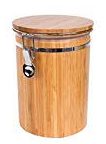 Here one made of bamboo that I easily found online. It only comes in one size (5.5-Inch Diameter x 7.6-Inch H) but it’s intended for bulk storage of coffee, tea, beans, spices, noodles and other dry food. Includes a removable, food grade plastic lining.
Here one made of bamboo that I easily found online. It only comes in one size (5.5-Inch Diameter x 7.6-Inch H) but it’s intended for bulk storage of coffee, tea, beans, spices, noodles and other dry food. Includes a removable, food grade plastic lining.
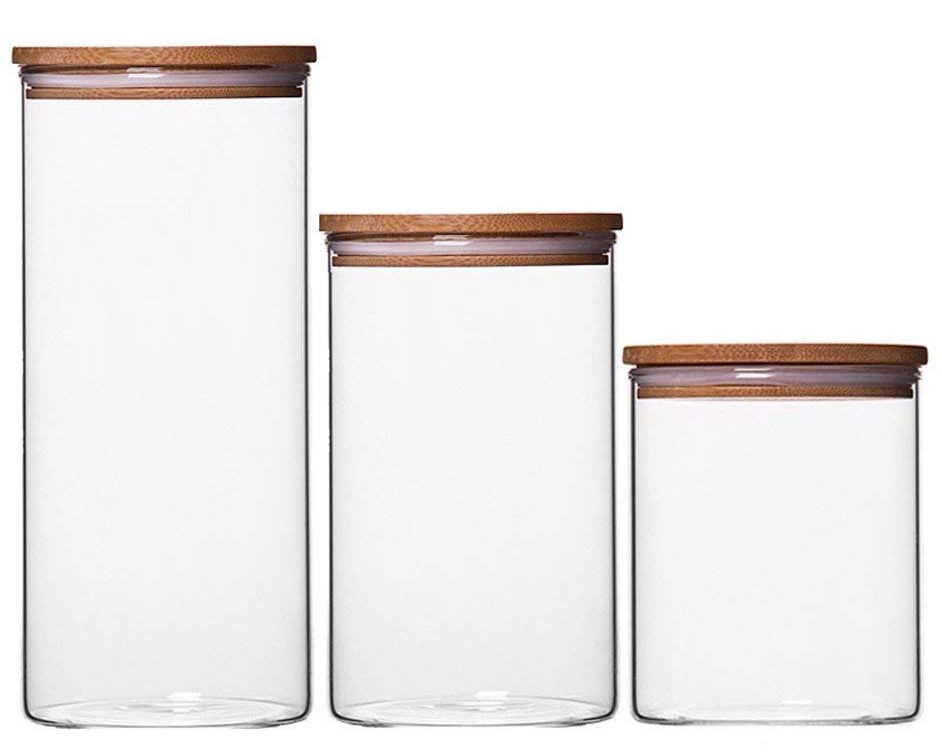 Here’s another one that is glass with a bamboo lid, also online. Looks to be a rather lightweight glass rather than a heavy glass like a jar.
Here’s another one that is glass with a bamboo lid, also online. Looks to be a rather lightweight glass rather than a heavy glass like a jar.
If you want wooden containers, look for bamboo. There are many affordable products now made from this fast-growing wood.
Resources for Electromagnetic Fields (EMFs)

I put together this list of resources for you regarding EMFs because they are a health concern of equal magnitude to toxic chemical exposure and I want you to get information from experts that are more trained and experienced in this field than I am.
It is especially important to know about EMFs because simultaneous exposure to EMFs and toxic chemicals makes the toxic chemicals even more toxic.
…we have hundreds of pollutants in the air we breathe (indoors and outdoors), the water we drink, the food we eat, and the products we touch. Depending on a number of factors, some or most of these potential toxins can enter the bloodstream. Under full body high power flux RFR, these toxins can penetrate the various blood-organ barriers normally impermeable to them. Other types of barriers can be penetrated as well, and the protective compartmentalization of the body can become very dysfunctional. However, to display the full extent of these adverse effects in safety studies, where the RFR is functioning as a promoter/enabler, experiments are required to include these other toxic stimuli in combination with the RFR.
— “Radio Requency Radiation (RFR) as a promoter/Enabler of Adverse Health Effects”
So in addition to creating a home that is free of toxic chemicals, I also encourage you to learn about EMFs and create a home that minimizes EMF exposures as much as possible.
Here are some resources recommended to me by experts. Please let me know if you know of additional resources that should be added to this list.
FORUMS WHERE YOU CAN ASK QUESTIONS:
https://www.electricsense.com/forum/
es-forum.com
WEBSITES:
http://ehtrust.org/
http://emfanalysis.com/
https://www.saferemr.com/2016/04/cell-phone-and-wireless-technology.html
http://www.es-uk.info/
http://www.emfrelief.com/
https://search.mercola.com/results.aspx?q=EMF#stq=EMF
https://maisonsaine.ca/english/
METERS, SHIELDING and OTHER EMF-REDUCING PRODUCTS:
INTERVIEWS I’VE DONE WITH EMF EXPERTS ON TOXIC FREE TALK RADIO:
- ORAM MILLER: EMF Basics: Radio Frequencies
- ELLEN MARKS: You Have a Right To Know About the Dangers of Cell Phones
- Dr. DEVRA LEE DAVIS, M.P.H., Ph.DHow Cell Phones Harm Your Health and How to Stay Safe
- ELLEN MARKS: Berkeley’s Proposed Cell Phone “Right to Know” Ordinance
- RICHARD H. CONRAD, PhD: Living With Electromagnetic Hypersensitivity (EHS)
- OLLE JOHANSSON: Health Effects of Modern Man-Made Electromagnetic Field and Functional Impairment Electrosensitivity
- SUZANNE AND JAMES MCCONNELL: Protect Your Health From EMFs with Clothing That Shields Your Body
- ELLEN MARKS: Cell Phones, Brain Tumors, Labeling and Your Right to Know
- ORAM MILLER: Watch Out for Wi-Fi in Everything
- DR. RYAN MCCAUGHEY AND DR. RONG WANG: How to Protect Your Body From Your Cell Phone
- LAWRENCE J. GUST: How Bau-Biology Can Help Cure Your Sick Home
- ANDRE FAUTEUX: Electrosensitivity and Smart Meters
Independence from Toxic Chemicals

Tomorrow is Independence Day, so I’m taking a holiday from website work this week to celebrate one of my favorite holidays of the year.
Independence Day has a special meaning for me because I am descended from nine Patriots who fought in the Revolutionary War for our freedom. My grandmother and great aunts were members of the Daughters of the American Revolution, so in my family, freedom was something to be honored and celebrated.
Some years ago I wrote a piece about independence that I want to share with you today. Every year I bring this out again, because independence as a concept is so important to me, and particulary independence from toxic chemicals in consumer products.
* * * * *
For me, Independence Day is about more than having a picnic and going to the fireworks (usually we have both picnic and fireworks, but today it looks like we might be rained out). It’s a time to bring my attention again to the concept of independence in my own life, and for the nation in which I live.
I love the Declaration of Independence.
“We hold these truths to be self-evident, that all men are created equal, that they are endowed by their Creator with certain unalienable Rights, that among these are Life, Liberty and the pursuit of Happiness.”
This is the idea that our country was founded on. This is the idea that men and women fought for and gave their lives for, that we should have Life, Liberty, and Happiness.
Life is not just an individual human being alive. Life is the whole of life that supports each individual organism. We have not just the right, but in the words of our forefathers, the unalienable right to be alive as individuals and to have all of Life there to support our individual lives.
Today, the primary attention of our nation is on the industrial economy. How different things would be if our first priority as a nation was to ensure that Life is sustained.
What is independence?
Here is part of a dictionary definition:
- not subject to control by others : self-governing
- not affiliated with a larger controlling unit
- not requiring or relying on something else
- not looking to others for one’s opinions or for guidance in conduct
- not requiring or relying on others (as for care or livelihood)
- showing a desire for freedom
Each entity must have the freedom to be independent, the freedom to govern themselves. to make decisions in their own best interest and in the best interest of all Life. Each individual person, each individual relationship, each individual household, each individual business, each individual community, each individual town, each individual state, each individual nation. We must claim independence for ourselves and grant it to others.
At the same time, we must recognize that we are also interdependent, that our life, liberty and happiness depends on every other living organism having their life, liberty, and happiness. Every one. Birds and trees and fish and butterflies and all other living things in addition to humans.
We are both our independent selves as individuals AND interdependent with all the rest of life.
This is what I remind myself of on Independence Day.
USHISTORY.ORG: The Declaration of Independence Has the full text of the Declaration, along with profiles of the signer, Thomas Jefferson’s account of the writing of the Declaration, and more.
THE CO-INTELLIGENCE INSTITUTE: Interdependence, Interdependence Days and Declarations of Interdependence Discusses independence and interdependence and gives a history of Declarations of Interdependence, along with links to them.
* * * * *
Now I also want to say that independence has everything to do with living toxic free. Manufacturers need freedom to make toxic-free products and we need freedom to choose them.
We CAN be free from the harmful effects of toxic chemcials by exercising our human right to make the choices that lead to that freedom. We can make our own choices to have life, liberty, and happiness.
Happy Independence Day!
Naturepedic Crib Mattress Questions
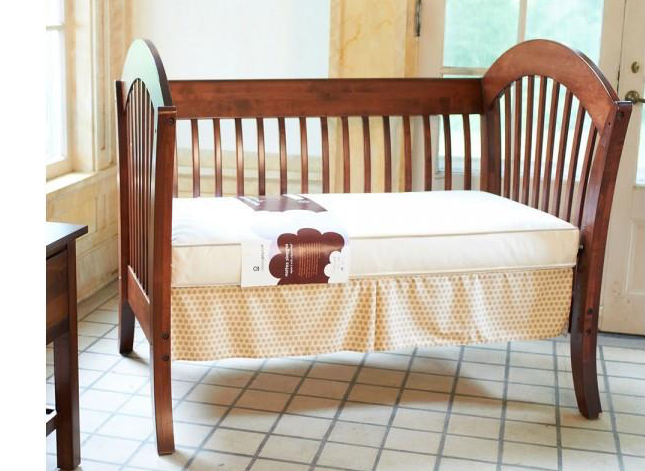
Question from Sophia
Hi Debra,
I’m looking to purchase a Naturepedic crib mattress and want to ask you your opinion.
What is the best nontoxic option between the two following options?
option 1) The ‘polyethylene’ fabric that coats the Organic Cotton 2 in 1 Ultra/Quilted Crib Mattress ( U.S. Patent No. 9,259,096. Other patents pending.)
https://www.naturepedic.com/our-products/baby/baby-crib-mattresses/quilted-series/organic-cotton-2-in-1-ultra-quilted-252-crib-mattress
option 2) the organic waterproof Pads featuring “Drysleep TM” technology which is a “polyurethane waterproof barrier”?
https://www.naturepedic.com/info/drysleep
If you’re able to describe the differences between the two and the relative pros and cons it would be much appreciated.
Also, is there any point to getting an organic natural fibre mattress when you have to put a plastic mattress protector on top to make it waterproof? Why not get a normal mattress and just wrap it in polyethylene ?
Thanks so much!
Debra’s Answer
To answer your toxicity question, both polyethylene and polyurethane film (not polyurethane foam) are about the same in terms of toxic exposure: infinitesimal. If I had to choose one to be less toxic it would be polyethylene because it is a very simple plastic and Naturepedic’s polyethylene is made from non-GMO sugar cane, not petroleum.
A few years ago, Clean Production Action developed The Plastics Scorecard, which evaluates the hazardous effects of various plastics. Polyethylene is one of the “most benign” plastics.
To answer your other question, I asked Naturepedic founder Barry Cik to explain in his own words. And here’s what he said…
Excellent questions. Let’s go through this step-by-step:
A. Why should a crib mattress be waterproof?
Babies have accidents. Whether it’s urine or bigger messes or spilled milk or whatever, if the mattress is not totally waterproof and easy to clean, you’ll be growing a garden filled with microbes, bacteria, etc. This is not a healthy environment for a baby.In former times, you put straw down for the baby to sleep on. And when the straw was no longer usable, you took away the straw and put down new straw. But we don’t live in that world any longer. Today everyone wants a mattress, and the mattress must last for a long time. So there is no choice but to waterproof the mattress if you want to maintain hygienic conditions.
B. What’s the most non-toxic waterproofing for a crib mattress?
Polyethylene wins hands down. According to a review of polymers (plastics) done by Clean Production Action, the conclusion for polyethylene is “For each manufacturing step, no core chemical inputs are chemicals of high concern as defined by GreenScreen Benchmark 1.” (See the attachment)In Naturepedic products, the waterproofing is food-grade polyethylene, which means that it meets the FDA standard for food-contact, and, further, it’s made from sugarcane. As well, the sugarcane is non-GMO.
C. So why is polyurethane used in some products?
There is no polyurethane in any Naturepedic mattresses. All Naturepedic mattresses are waterproofed with polyethylene. But there are some other products that can’t use polyethylene for waterproofing. In particular, waterproof protector pads that are continuously put into the washing machine and dryer fall apart quickly if waterproofed with polyethylene. So, for waterproof protector pads, Naturepedic uses a clean polyurethane, free of many toxic chemicals (and the polyurethane is not even visible on the surface as it’s a very small amount added to the interior of the pad, just enough to make the pad waterproof). This is approved by the Global Organic Textile Standard (GOTS) and meets the GOTS non-toxic standard.D. If polyethylene is so wonderful, why not just get a regular crib mattress and wrap it in polyethylene?
Some people do exactly that. (I noticed that the question is coming from someone in Australia – and wrapping crib mattresses in polyethylene is done quite a bit in New Zealand and perhaps also in Australia, and this does greatly help in preventing babies from coming into contact with a number of poisons.)
That said, it’s one thing to use polyethylene to shield the baby from various poisons. But, if you can get the whole mattress to be free of all these poisons, why put your baby on a “regular” mattress to begin with, even with the polyethylene wrap?
With Naturepedic crib mattresses, you get the entire mattress approved and certified to the GOTS standard. Naturepedic crib mattresses are not made with vinyl (PVC), phthalates, ethyl vinyl acetate (EVA/PEVA), perfluorinated chemicals (PFCs), polyurethane foam, chemical flame barriers or any other flame retardant chemicals, latex (a potential allergen for babies, even if natural/organic), formaldehyde, pesticides, GMOs, glues/adhesives, etc. And then, as well, the waterproofing is food-grade polyethylene made from non-GMO sugarcane.
Note: The question also refers to the 2-in-1 Ultra/Quilted Crib Mattress. This is waterproof on one side and quilted, but not waterproof, on the other side. This model is made for people who generally want the waterproof side for infants, but then are comfortable using a non-waterproof quilted surface for a toddler. This is a personal decision, but we always recommend using a waterproof crib surface, or a waterproof pad placed over a non-waterproof surface, if there is a chance of leakage into the mattress. As stated up front, we do not recommend taking chances when it comes to hygiene.
Finding Upholstery Fabrics Without Fire Retardants
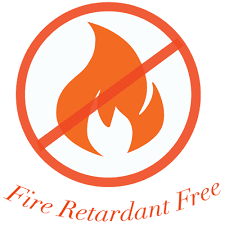
Question from Allen
Hi Debra,
Thanks for dedicating your website to toxic free! I have been looking for a fabric that is not treated with stain finish or fire retardants. It looks like even 100% wool upholstery fabric is treated with FR, at least those from eBay who sell discounted fabric from design houses.
I came across this link and it says, “TB117-2013, implemented in 2015, allows for safer, healthier furniture: Stops furniture fires where they start (on fabrics of upholstered furniture)”. I read this to mean that fabrics are still treated with FR? The only place I’ve found that doesn’t is two sisters, but their fabrics are VERY expensive. Can you confirm?
http://greensciencepolicy.org/wp-content/uploads/2017/03/Buying_FR-free_furniture.pdf
Debra’s Answer
There are two issues here.
First let’s clear up TB117-2013. All it contains is the instructions for doing the flammability test.
Here’s a simple summary of TB117-2013.
The big change is that the flammability test is now done on the COVER instead of the FOAM. So the test can be passed without adding fire retardant to the foam. They still test the cover and foam together, but the burden of flammability is now on the cover, where the smoldering cigarette would fall.
The big benefit is that furniture can now meet the flammability standard without flame retardants. But it does not ban the use of flame retardants.
But here is the problem.
I did a quick search on “wool uphostery fabric” and found, as an example, this link
https://www.insidefabric.com/p-1316741-cheviot-venetian-brown-by-abbeyshea.aspx
Under flame retardants it says “California Technical Bulletin 117 Section E- 2013 NFPA 260 Class 1.”
I’m seeing that on other upholstery sites too, such as this one, which allows you to search by different flammability requirements. https://www.robertallendesign.com/all-products/fabric/shopby/fab_flameretardancy-ufac_class_1.html
I called both retailers. Both said that this means that the fabric will pass the flammability standards listed for the fabric. One said they even have their own lab that tests the flammability of fabrics in-house.
It does NOT mean no flame retardants. In fact, these two retailers did not know how or why the fabrics pass. They could be inherently flame resistant or chemical flame retardants could be added.
In fact, these companies and others have no interest in flame retardants. They both said they would need to call the manufacturer to find out if any given fabric had flame retardants added. It’s not part of their standard database information they keep on fabrics.
Here a short article that summarizes the flame retardant properties of various fabrics.
On the Fabrics page of Debra’s List. I’ve listed websites that sell natural upholstery fabrics and are aware to toxics issues. In addition to Two Sisters EcoTextiles there is also Envirotextitles and Natural Uphosltery. These are the types of places that can help you find the toxic free fabrics you are looking for.
Organic Weave
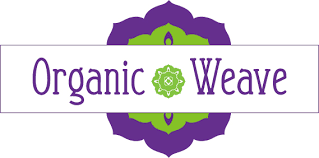 “The World’s Only Certified Organic Rug Company.” Artisan-made wall-to-wall ”broadloom” and area rugs made from certified organic cotton, silk and wool with chemical-free plant-based dyes in a certified organic facility. Also children’s rugs and custom designs. “No odor/offgassing…Organic Weave aims for transparency in everything that we do.” Understands MCS needs. USE coupon code DEBRA5 for a 5% discount.
“The World’s Only Certified Organic Rug Company.” Artisan-made wall-to-wall ”broadloom” and area rugs made from certified organic cotton, silk and wool with chemical-free plant-based dyes in a certified organic facility. Also children’s rugs and custom designs. “No odor/offgassing…Organic Weave aims for transparency in everything that we do.” Understands MCS needs. USE coupon code DEBRA5 for a 5% discount.
EnviroTextiles
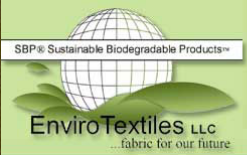 A full range of fabrics made from hemp, plus fabrics made from hemp blended with other natural and organic fibers, including fabrics for clothing and upholstery. Many have no dye. Also hemp yarn, twine, and rope. Basic hemp clothing: t-shirt, hoodie, socks. Towels and tote bags. Samples of fabrics available.
A full range of fabrics made from hemp, plus fabrics made from hemp blended with other natural and organic fibers, including fabrics for clothing and upholstery. Many have no dye. Also hemp yarn, twine, and rope. Basic hemp clothing: t-shirt, hoodie, socks. Towels and tote bags. Samples of fabrics available.






